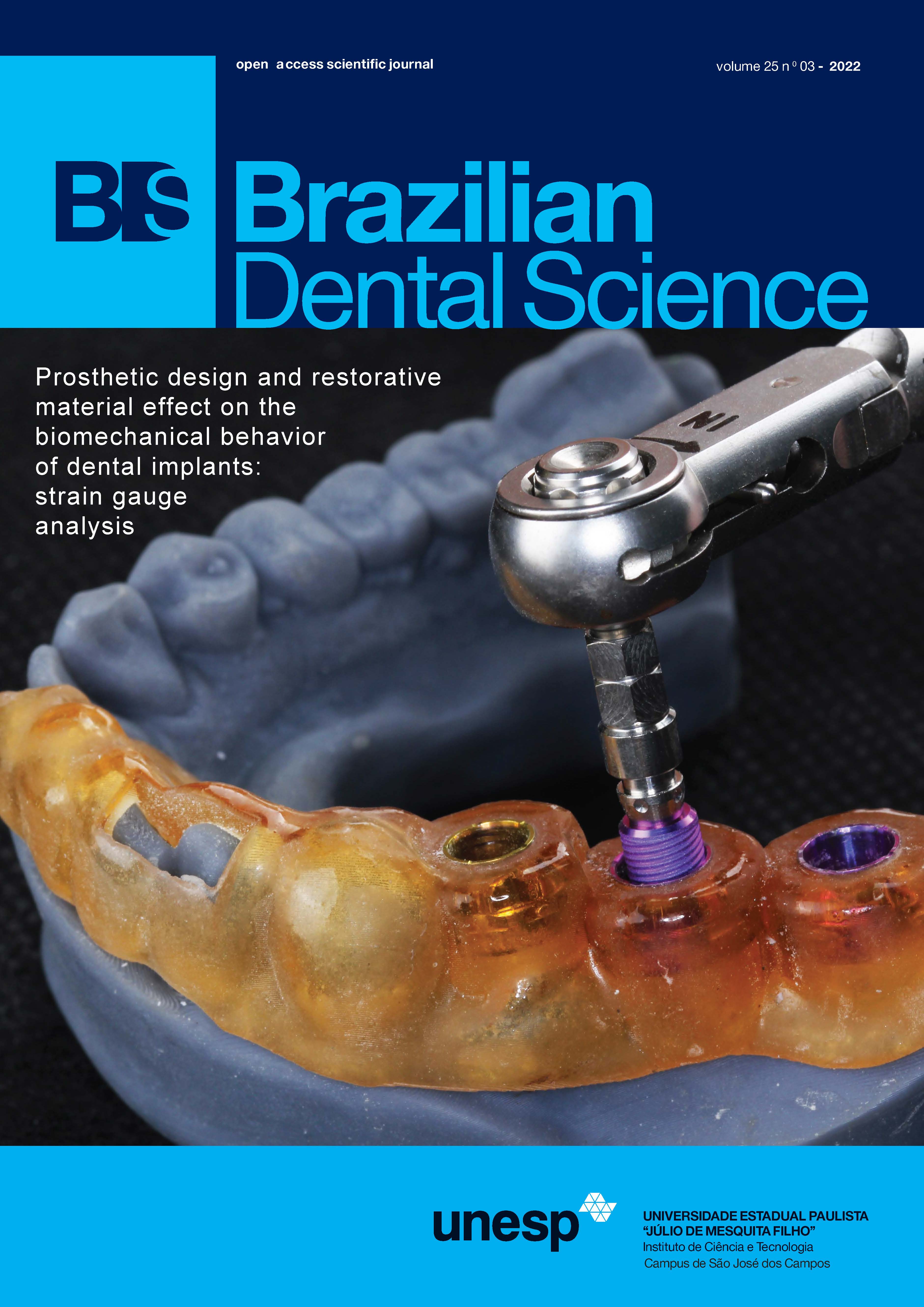Evaluation of palatal volume in children with cleft lip and palate: a comparison of two surgical protocols
DOI:
https://doi.org/10.4322/bds.2022.e3299Abstract
Objective: Compare the palatal volume in children with unilateral cleft lip and palate before and after two surgical
protocols. Material and Methods: Retrospective data collection was performed in a specialized hospital. The
sample comprised 120 digitized dental models divided into, Group 1 (G1) – participants submitted to cheiloplasty
at 3 months (Millard technique) and one-step palatoplasty at 12 months (von Langenbeck technique); Group 2
(G2) – participants submitted to cheiloplasty (Millard technique) and hard palate closure (Hans Pichler technique)
at 3 months and soft palate closure at 12 months (Sommerlad technique). The dental models were evaluated
at Time 1 (T1): before primary plastic surgeries, Time 2 (T2): 1st post-surgical phase, and Time 3 (T3): 2nd
post-surgical phase. The volume was measured through stereophotogrammetry system software. Parametric and
non-parametric statistical tests were applied (alpha = 5%). Results: The intragroup analysis revealed that G1 had a
statistically significant increase in volume at T2 followed by a reduction at T3 (p=0.003); G2 showed a statistically
significant increase of dental arch volume between T1 and T2 (p=0.001). There was no statistically significant
difference in the intergroup and gender analyses (p>0.05). Conclusion: The surgical protocol influenced the
palatal volume of children with unilateral cleft lip and palate. This study suggested that two-step palatoplasty
protocol has a tendency to be more appropriate.
KEYWORDS
Cleft lip; Cleft palate; Dental arch; Imaging; Three-dimensional.
Downloads
Downloads
Published
How to Cite
Issue
Section
License
Brazilian Dental Science uses the Creative Commons (CC-BY 4.0) license, thus preserving the integrity of articles in an open access environment. The journal allows the author to retain publishing rights without restrictions.
=================




























